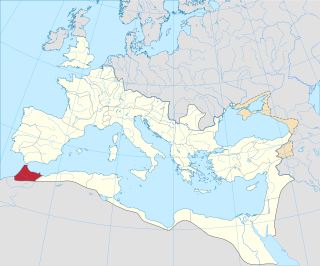
Benedict of Nursia, often known as Saint Benedict, was an Italian Christian monk, writer, and theologian. He is venerated in the Catholic Church, the Eastern Orthodox Church, the Oriental Orthodox Churches, the Anglican Communion, and Old Catholic Churches. In 1964 Pope Paul VI declared Benedict a patron saint of Europe.

Pope Marcellus I was the bishop of Rome from May or June 308 to his death. He succeeded Marcellinus after a considerable interval. Under Maxentius, he was banished from Rome in 309, on account of the tumult caused by the severity of the penances he had imposed on Christians who had lapsed under the recent persecution. He died the same year, being succeeded by Eusebius. His relics are under the altar of San Marcello al Corso in Rome. Since 1969 his feast day, traditionally kept on 16 January by the Catholic Church, is left to local calendars and is no longer inscribed in the General Roman Calendar.

Saint George, also George of Lydda, was a Christian who is venerated as a saint in Christianity. According to tradition, he was a soldier in the Roman army. He was of Cappadocian Greek origin and a member of the Praetorian Guard for Roman emperor Diocletian, but was sentenced to death for refusing to recant his Christian faith. He became one of the most venerated saints and megalomartyrs in Christianity, and he has been especially venerated as a military saint since the Crusades. He is respected by Christians, Druze, as well as some Muslims as a martyr of monotheistic faith.
The 300s decade ran from January 1, 300, to December 31, 309.

Cyprian was a bishop of Carthage and an early Christian writer of Berber descent, many of whose Latin works are extant. He is recognized as a saint in the Western and Eastern churches.

Saint Valentine was a 3rd-century Roman saint, commemorated in Western Christianity on February 14 and in Eastern Orthodoxy on July 6. From the High Middle Ages, his Saints' Day has been associated with a tradition of courtly love. He is also a patron saint of Terni, epilepsy and beekeepers. Saint Valentine was a clergyman – either a priest or a bishop – in the Roman Empire who ministered to persecuted Christians. He was martyred and his body buried on the Via Flaminia on February 14, which has been observed as the Feast of Saint Valentine since at least the eighth century.

Saint Lawrence or Laurence was one of the seven deacons of the city of Rome under Pope Sixtus II who were martyred in the persecution of the Christians that the Roman Emperor Valerian ordered in 258.

Saint Sebastian was an early Christian saint and martyr. According to traditional belief, he was killed during the Diocletianic Persecution of Christians. He was initially tied to a post or tree and shot with arrows, though this did not kill him. He was, according to tradition, rescued and healed by Saint Irene of Rome, which became a popular subject in 17th-century painting. In all versions of the story, shortly after his recovery he went to Diocletian to warn him about his sins, and as a result was clubbed to death. He is venerated in the Catholic Church and the Orthodox Church.

Tangier is a city in northwestern Morocco, on the coasts of the Mediterranean Sea and the Atlantic Ocean. The city is the capital of the Tanger-Tetouan-Al Hoceima region, as well as the Tangier-Assilah Prefecture of Morocco.

Cassian, or Saint Cassian of Imola, or Cassius was a Christian saint of the 4th century. His feast day is August 13.

Mauretania Tingitana was a Roman province, coinciding roughly with the northern part of present-day Morocco. The territory stretched from the northern peninsula opposite Gibraltar, to Sala Colonia and Volubilis to the south, and as far east as the Mulucha river. Its capital city was Tingis, which is the modern Tangier. Other major cities of the province were Iulia Valentia Banasa, Septem, Rusadir, Lixus and Tamuda.

Tingis or Tingi, the ancient name of Tangier in Morocco, was an important Carthaginian, Moor, and Roman port on the Atlantic Ocean. It was eventually granted the status of a Roman colony and made the capital of the province of Mauretania Tingitana and, after Diocletian's reforms, the diocese of Hispania.

The Catholic Church in Morocco is part of the worldwide Catholic Church, under the spiritual leadership of the Pope in Rome. Catholics account less than 1% of the overall population of over 31 million. The country is divided into two archdioceses; Rabat and Tangier.

Saint Marcellus of Tangier or Saint Marcellus the Centurion was a Roman centurion who is today venerated as a martyr-saint in both the Eastern Orthodox and the Catholic Church. His feast day is celebrated on October 30.

Abyla was the pre-Roman name of Ad Septem Fratres. Ad Septem Fratres, usually shortened to Septem or Septa, was a Roman colony in the province of Mauretania Tingitana and a Byzantine outpost in the exarchate of Africa. Its ruins are located within present-day Ceuta, an autonomous Spanish city in northwest Africa.
Saint Cassian of Autun was a 4th-century bishop of Autun. He may have been an Egyptian by birth. He traveled to Autun and was a follower of Saint Reticius, bishop of Autun.

October 29 - Eastern Orthodox liturgical calendar - October 31

December 2 – Eastern Orthodox liturgical calendar – December 4

The vine staff, vine-staff, or centurion's staff was a vinewood rod of about 3 feet (1 m) in length used in the ancient Roman Army and Navy. It was the mark and tool of the centurion: both as an implement in the direction of drill and maneuvers; and to beat wayward or laggard soldiers or sailors under his command. It was also borne by evocati who held an equivalent rank.
















